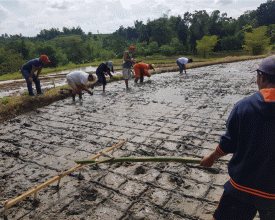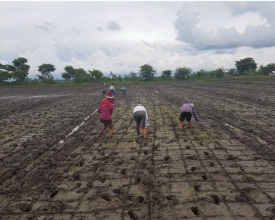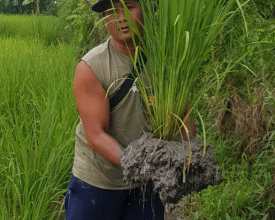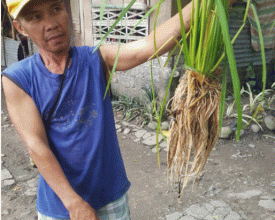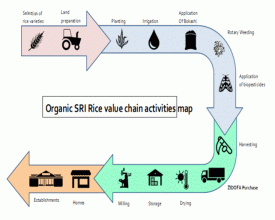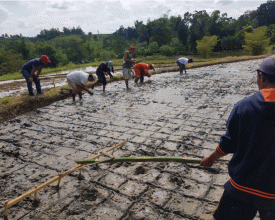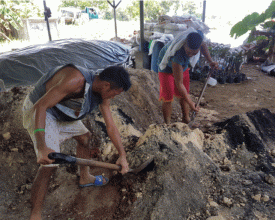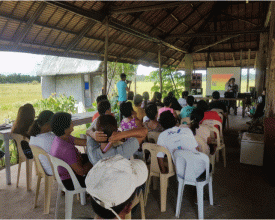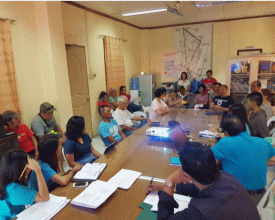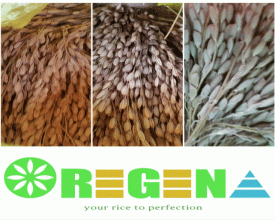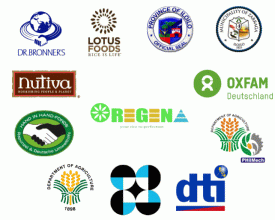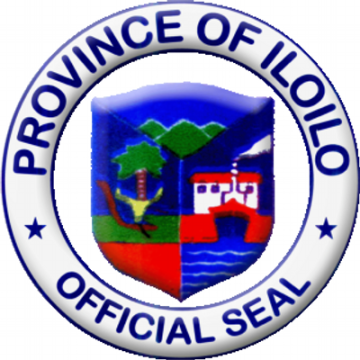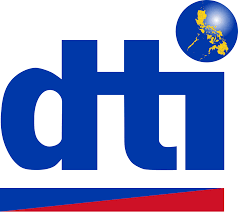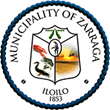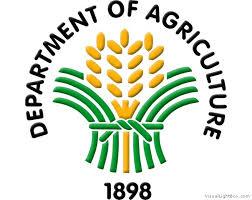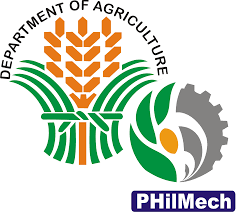
The System of Rice Intensification (SRI) in the Philippines to benefit farmers, consumers and biodiversity
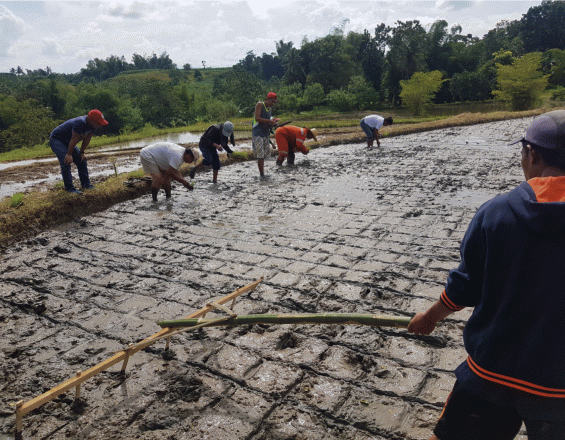
Against a backdrop of declining soil quality and fertility from incessant use of synthetic fertilizers and agro-chemicals, low farmgate prices offered by traders, steadily increasing prices of farm inputs and loss of farm labor to other higher paying jobs, a group of small-farmers initiated a regenerative organic agriculture project using the climate and environment-friendly System of Rice Intensification (SRI) to change the way Filipinos cultivate rice.
The Zarraga Integrated Diversified Organic Farmers Association (ZIDOFA) is spearheading this initiative using a holistic value chain approach in order to produce high quality, safe, affordable and healthy organic SRI rice to Filipino consumers, protect, conserve and restore biodiversity in the farm and marine and coastal ecosystems and bring the benefits and the credit back to the farmers and empowering them through the creation of a closed-loop organic SRI rice value chain devoid of exploitative middlemen and traders.
Contexto
Défis à relever
The challenges for small-farmers in the project area are declining soil quality and fertility from incessant use of synthetic fertilizers and agro-chemicals, low farmgate prices offered by traders, steadily increasing prices of farm inputs and loss of farm labor to other higher paying jobs.
Add to these the aggressive campaign by agro-chemical companies to promote input-intensive methods of cultivation and the use of input intensive hybrid rice seeds with promises of higher yields, then the situation becomes dire for struggling Filipino rice farmers who have to deal with high production costs, decreasing yields due to declining soils, cheap farmgate prices and their inability to get out of a vicious cycle of chemical dependency and financial debt just to attain decent yields.
Ubicación
Procesar
Summary of the process
Build from the bottom up by a core group of passionate and committed small-farmers banding together towards a mission and vision aimed at helping farming communities, produce healthy and affordable rice and restore, protect and conserve biodiversity in farm and coastal ecosystems. These form the foundation for subsequent execution of project components for a closed-loop organic rice value chain.
The use of a transformational technology such as the System of Rice Intensification and organic fertilization allows ZIDOFA to raise the standards of quality and organic integrity of their organic-based SRI rice plants and produce milled organic pigmented rice which are at par with international standards for export and adheres to nutrient recycling concepts of organic agriculture.
At the start of the cropping cycle, simultaneous executions and implementations of all components of the value chain is critical to attain acceptable success as opportunities for change or pioneering solutions only come in cropping cycles and as such, dependencies should be reduced if not eliminated.
Strong strategic partnerships allow for exchange of ideas, best practices, lessons learned and funding and grant opportunities.
Building Blocks
Use of the Organic-Based System of Rice Intensification as the preferred protocol for rice cultivation
The System of Rice Intensification (SRI) is a group of agronomic management practices and principles which delivers optimum conditions for rice plants to manifest their fullest potentials for growth and yield. This climate and enviroment friendly method of rice cultivation uses 50 percent less irrigation water, requires 90 percent less seeds and allows for the cultivation of rice using only organic inputs with zero chemical or synthetic fertilizers.
SRI ensures that farmers in the group all use the same protocols or method of cultivation, use the same seed varieties and prepare organic inputs using the same formulas and use them in the same dosages. These ensure that quality of rice grains are consistently of high quality and of the same organic integrity from farmer to farmer.
Additionally, organic SRI plants exhibit substantial root architectures which allows them to withstand long periods of drought or extreme bouts of wind and rain. The deeply entrenched roots also allow for maximum uptake of nutriens and water as well as allows the rice plants to sequester deeper in the soil horizon, organic and photosynthetic carbon. The use of intermittent irrigation also lessens emissions of methane as a Green House Gas and the non-use of fertilizers reduce carbon emissions.
Enabling factors
Key to the project would be the successfull execution of organic-based SRI practices and principles by the participating farmers. As such, continued training for SRI and organic agricultural practices should be conducted.
The availability of organic fertilizers and inputs is critical to replace the nutrients otherwise previously provided by synthetic fertilizers..
On-site and continuous farmer monitoring and mentoring will reduce risk and increase probability of succes especially for first time practitioners.
Lesson learned
Volunteerism is key to success as the lack of farm labor could delay the execution of agronomic tasks related to SRI and will result in compounding of problems. If rotary weeding is delayed or not done as scheduled, weeds will grow out of control and will lead to failuer. If not enough organic inputs are avaiable and applied to the rice paddies and sprayed to the plants as foliar fertilizers, then yield will not be maximized.
Farmers who are too dependent tend to cheat and apply chemicals and poisons for diseases and pests when no one is looking. Random monitoring and strict mentoring discourages this. Only when the plants have shown their robust health will most first-timers be convinced that healthy organic rice plants can ward off pest and disease infestations on their own.
Lack of farm equipment will likewise adversely affect the planting and cultivation schedules. Preparing project proposals to government agencies should be done in advance as it may take a year or two for assitance and support to be placed in the pipeline for delivery
Training on use of locally available raw materials to manufacture organic inputs and amendments
This ensures that the most basic concept for sustainability is practiced by participating farmers and that it is nutrient recycling to veer away from input intensive dependence and transforming into low-input organic practices. Successfully carrying out this objective supports the participating farmers but also other farmers, who may want to try their hands on organic farming, the readily available supply of organic bokashi, vermicast and natural farming systems concoctions. The organic inputs will provide much needed nutrients and micronutrients required by rice plants in order for it to manifest its maximum potentials at optimum conditions. Healthy rice plants establish what is known as the "positive feedback loop" where it develops healthy and substantial root architectures which feed the upper biomass resulting in better photosynthetic capabilities which can then provide nutrients for the roots to develop even more. Once this loop is established, the plant can easily ward off pest and disease attacks. The preparation of organic inputs also offers an opportunity for farmers to sell to other parties outside of ZIDOFA and can supplement their income while waiting for their rice to be harvested. Sufficient supply of organic inputs lessens dependence on chemicals.
Enabling factors
Continued education on newer technologies coupled with farm to farm visits will allow farmers to not only share knowledge but also to share available materials needed as ingredients for organic input manufacture.
Presence of open sided rain shelters for the farmers to work on.
Lesson learned
Continuous monitoring and mentoring to ensure that the organic inputs are applied at the right amount and at the right schedules. Inability to follow input application schedules will lead to lower yield.
Continous monitoring of raw materials used to ensure quality and organic integrity of organic inputs.
Documentation of yields versus inputs applied is important to show correlation and effectiveness.
Build from the Bottom Up
A solidly passionate and comitted core group of farmers which will persevere and persist to advance not only organic-based SRI to other farmers and farming communities but who are consciencious farmers in producing high quality, healthy and affordable organic SRI rice for consumers is one of the keys towards project completion by ZIDOFA.
Enabling factors
Select members of the core group who are already practitioners of organic agriculture or who possess strong interest in doing so. The lack of funds for recruitment, training and promotion of organic SRI to other farmers was offset by the fact that the core group of ZIDOFA farmers accepted the challenges and figured out solutions despite all odds.
Lesson learned
Look for quality members, and not just quantity.
Transparency in all processes is a must.
Simultaneous Solution Finding for All Components of the Value Chain in a Holistic Approach
As ZIDOFA farmers trained on SRI, training for organic fertilizer manufacture was also incorporated so that the organic inputs can be available once the cropping cycle started as and such, the farmers can focus on the SRI agronomic management principles instead of having to still worry about making organic inputs.
As the ZIDOFA farmers started planting and cultivating their organic SRI rice plants, ZIDOFA was already seeking market linkages with potential customers for the upcoming harvested paddy rice and the eventual milled organic paddy rice.
All throughout the chain of activities, ZIDOFA was aggressively joining national and regional exhibits as well as trade fairs in order to promote SRI and to increase public awareness on the benefits of organic pigmented rice as part of consumer diet. The environmental ramifications of organic-based SRI was also highlighted with ZIDOFA adopting the following tagline "That Farmers, Soils and Oceans May Live" in all its communications engagements including social media.
All throught the cropping year, ZIDOFA submitted project proposals for its needed equipment and infrastructure and persistently followed up on their statuses
Continous seeking of funding sources.
Enabling factors
Creation of an Operational and Project Plan
Assignment of tasks to Committees
Fund, Resource and Manpower Availability
Physical office space for operational planning, execution, monitoring and evaluation
Lesson learned
The need for administrative staff was highlighted as the work load can be overwhelming most times.
The need for a physical office space is critical for communication flow and organizational planning.
The need for and lack of operational funds was highlighted early on in the project
Creation of a Mission and Vision by Members
To make sure the project stayed on track to its aim and commitment to provide safe, affordable and healthy food for consumers, restore, protect and conserve biodiversity and to promote farmers' welfare, ZIDOFA farmers were actively engaged in the creation of ZIDOFA's Mission and Vision Statements by conducting a Strategic Plannig workshop by CORE, Philippines. Additionally, a Communications Planning workshop was conducted by leading communications and media experts to ensure that ZIDOFA members were on the same page on how to market SRI as well as its flagship product, the Oregena (abbreviation for Organic REGENerative Agriculture) line of organic SRI Rices.
The ZIDOFA Mission: To advance holistic, farmer-managed and environment-friendly programs utilizing leading edge processes promoting quality agricultural and aquaculture products
The ZIDOFA Vision: ZIDOFA envisions itself as a reputable producer of quality and globally competitive organic agriculture and aquaculture products. It envisions a resilient and productive community where families are healthy, happy and living harmoniously in a sustainable environment.
Enabling factors
Mission, Vision and Strategic Planning Workshop should be conducted at the start of the project.
Protection of the Environment, Health and Farmers should be an integral and key phrase in the Mission and Vision
A Communications Planning workshop should be conducted for the farmers to level up on product promotion and marketing and to increase global competitiveness through consistency in product and project taglines.
Lesson learned
All members should be regularly refreshed of the original Mission and Vision of the group and of the projects of the group
Product quality, brand recogniztion and promotion should be emphasized to and practiced by all in all phases of of product development from seed selection up to marketing.
Collaboration with any and all Private and Public Organizations who share the same concern for health, environment and the welfare of farmers and their communities
Global warming and climate-change is a global issue and solutions to avert climate change from tipping over and slow down global warming should likewise be global in nature.
"While we are relatively small individually…I believe that working together for a greater purpose, we can achieve our goals; many in body and one in mind." Ken Lee, Lotus Foods.
ZIDOFA's attainment of near completed status for the targetted closed-loop organic SRI rice value chain in the span of just two years despite the absence of a resident sponsoring NGO or support organization is attributable to its strategic partnerships with both private organizations and government agencies. As such, the various components of the value chain, mainly infrastructure, logistical and equipment support were granted by varying organizations and agencies.
At the start of the project, ZIDOFA submitted the Project Plan to as many private and government entities as possible and a year after project start, also submitted Executive Briefs to heads of agencies outlining the milestones, achievements and constraints met by the farmers. As such, by year two, the concerned organizations and agencies were well aware of the project and eventually became project partners thereby setting an unprecedented model for convergence.
Enabling factors
Communication channels established early on
Sharing the Mission and Vision and Objectives of the Project to stakeholders
Sharing not just achieved milestones but challenges and obstacles as well in clear manner
Transparency and regular and prompt progress reports
Focus on farmers, health and environment with no political, religious or other leanings.
Scope should be local, national and global
Lesson learned
Need for a physical office is imperative.
A communications officer and liason team should be put in place.
Funds for communication should be allotted and secured
Project meetings and reports should be well organized, archived and backed up.
Impacts
ZIDOFA small-farmers are all major actors in the rice value chain effectively empowering them to exercise environmentally and fiscally sound management decisions on farm resource use and agronomic practices. This covers the whole continuum from seed selection up to marketing including the advocacy to promote organic SRI and to increase public awareness on the health, environmental and socio-economic benefits of purchasing SRI brown rice.
ZIDOFA has converted 30 hectares of conventional rice fields into organic SRI and have increased yields paving the way for the availability of high quality, affordable and healthy organic pigmented rices and bridging the gap between farmers and consumers.
SRI used 90 percent less seeds and SRI rice plants have demonstrated remarkable ability to resist biotic and abiotic stresses brought about by climate-change events. Intermittent irrigation in SRI reduced water use by 50 percent and resulted in aerobic conditions in the soil which inhibited populations of methane-producing organisms to thrive. Non-use of fertilizers has reduced the carbon footprint as well.
Organic SRI rice paddies now show an increase in organic matter content. Biodiversity is now restored as native species of fish and edible snail are now establishing healthy populations in SRI rice paddies.
Beneficiaries
The immediate beneficiaries are the small-farmers and their families and the 8 barangays (villages) they live in. 40,000 other farmers will potentially be impacted. Biodiversity in farm and marine ecosystems will be restored over time.
Sustainable Development Goals
Story
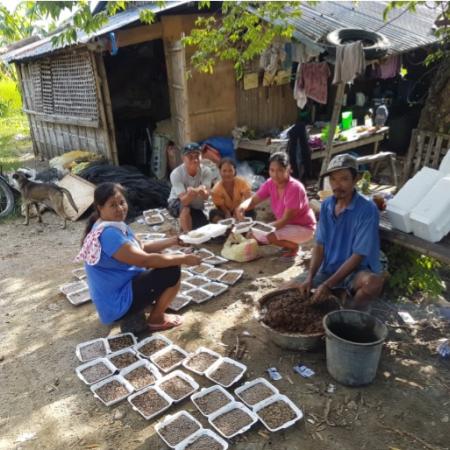
The ZIDOFA Initiative embodies the collective passion and commitment of a select group of small-farmers to take action to rein in the debilitating effects of climate-change events in the Philippine agricultural landscape by adopting the organic-based System of Rice Intensification (SRI) as a climate-change adaptation and mitigation measure. Despite the absence of funds for the first six months, the farmers managed to still meet weekly to draw up plans for the start of the project in the first cropping cycle of 2015. Efforts to recruit new members were overshadowed by aggressive campaigns by agro-chemical companies for hybrid and input intensive rice programs. Farmer dependency on chemicals, aggressive campaigns by agro-chemical companies and the lack of policy support for organic agriculture only made matters worse in that farmers were easily enticed into going back to inorganic methods
The project started off in November of 2014 as a simple email inquiring about Lotus Foods' More Crop Per Drop Program where they source their organic rice from farmers in Asia practicing organic-based SRI. The email caught the attention of Lotus Foods' Olivia Vent who then shared it with co-owners Ken Lee and Caryl Levine. That was the start of a series of email discussions which continue up to this time. On January of 2015, Professor Norman Uphoff of Cornell University and SRI-International had joined the group followed by John Roulac of Nutiva and eventually David Bronner and his team at Dr. Bronners became strategic advisers as well.
A group of small-farmers, passionate and committed to initiate a transformational change in rice cultivation, disrupting current conventional methods and replacing it with the climate and environment-friendly SRI method guided by a group of environmental warriors who believed in the small-farmers and the positive impacts their project can have on health, enviroment and socio economic welfare of farming communities. And a group of officials in various government agencies, who recognized the efforts already made by the farmers in initiating the project, despite the lack of funding and policy support. All these define the ZIDOFA Closed-Loop Organic SRI Rice Value Chain as a best fit climate change solution for replication.
